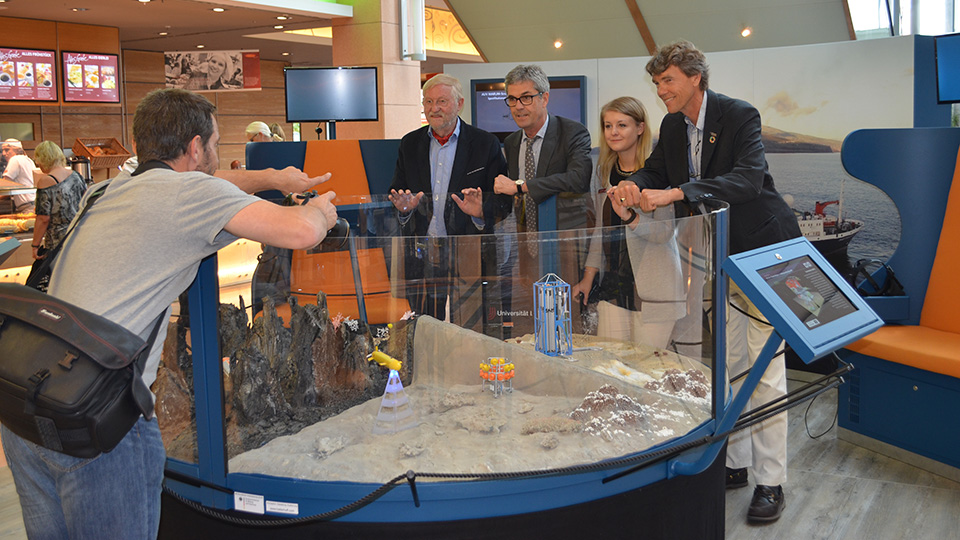- Home
- Discover
- Media Releases
- Media Releases 2017
- Expedition Deep Sea
The deep sea – discovering an unknown world on our planet
It is dark, cold, the pressure is overpowering – the deep sea, a region of our planet that is practically inaccessible to humans. Each research expedition into this realm is also a new excursion into unknown worlds. Less than ten per cent of the largest habitat on our planet is known to us. Researchers are employing the latest technology to explore the last remaining white patches on our globe. MARUM – the Center for Marine Environmental Sciences of the University of Bremen and the GEOMAR Helmholtz Centre for Ocean Research, Kiel, the two large German Marine Research Institutes, through the exposition “Expedition Deep Sea” in Kiel’s Citti-Park, present visitors with unique glimpses into present-day research.
The primary focus of the event is on the technologies that are required for investigating the deep sea. Step into a replica of the submersible research vehicle JAGO and just imagine how researchers explore the underwater world. In a full-scale model of the helm of a remote-controlled diving robot, visitors get a feeling for the insights that researchers experience and can see how it is operated. In the Deep-Sea Cinema, MARUM and GEOMAR show videos produced during these kinds of scientific dives.
GEOMAR’s autonomous underwater vehicle “ABYSS”, exhibited as a realistic 1:1 model, maps the structure of the sea floor at high resolution in water depths of up to 6000 meters. The dives are used as the basis for a virtual reality experience in which the visitors themselves go on a dive with the aid of 3D glasses. Like glider planes, the vehicles weave their way through the oceans, gathering information that is crucial for understanding and predicting our climate.
“GEOMAR and MARUM, with their technologies, have elevated the prospects for German research to a completely new level that seemed unrealistic just a few years ago. The two partner institutes are working together to further advance the opportunities for utilization in the coming years,” says Prof. Dr. Michael Schulz, Director of MARUM – the Center for Marine Environmental Sciences of the University of Bremen.
“In this exhibition we have assembled an impressive portfolio of deep-sea research in order to provide people with a fascinating view into this still widely unknown world,” says Prof. Dr. Peter Herzig, Director of the GEOMAR Helmholtz Centre for Ocean Research, Kiel.
The exhibition in Citti-Park, Kiel, opens on 10 August, at 11 o’clock. It can be viewed through 26 August during the regular opening hours of the Centre: Monday through Saturday from 9:00 am until 8:00 pm, and on Thursdays until 10:00 pm.
Contacts for further information and photo material:
Ulrike Prange
MARUM public relations
Telephone: 0421-21865540
Email: [Bitte aktivieren Sie Javascript]



